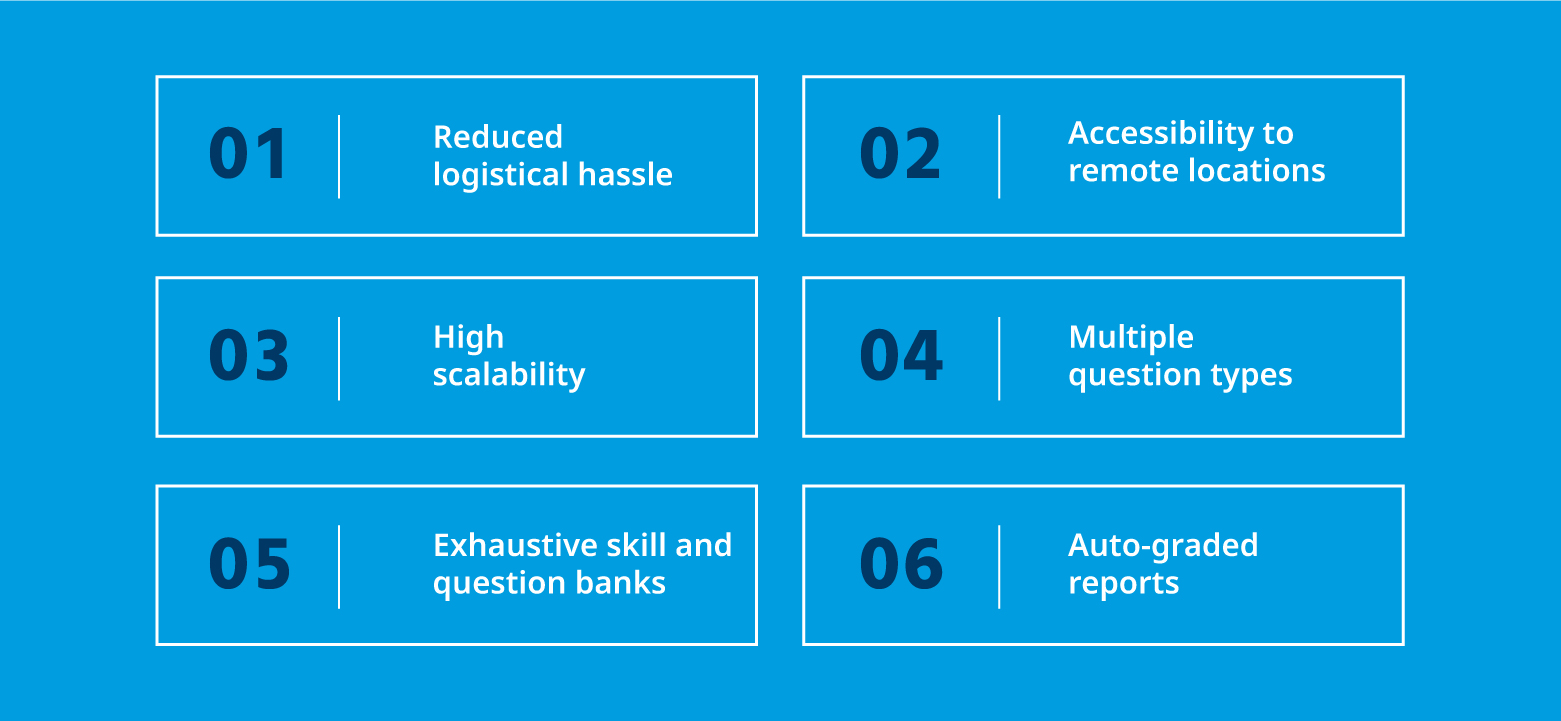The advent of technology has steadily digitized all services and offerings, taking them to the online platform, and education has been no exception. With the ubiquitous high-speed internet and laptops, the pervasiveness of technology has enabled a seamless transition to the online ecosystem.
Universities, schools and various educational institutions have progressed and adapted to Learning Management Systems (LMSs), where software applications track, report, administer and document materials that are shared with students. This teaching and evaluation system facilitates a balanced approach toward imparting knowledge and easy grading of the candidates.
Online exams aim to ensure that assessment givers can undertake the paradigm shift from offline to online processes. The online exam software industry is snowballing, and factors such as convenience, scalability, increased reach, and customization are shaping its adoption. Hence, established evaluation techniques are now nearing saturation and will soon become obsolete. In the following section, we discuss the extent of the spread of online exams in the education sector.
The need for computer-based tests
“Computer-based test” is an umbrella term covering any test given and taken using computers, with or without using the internet. Therefore, online exams are a subset of computer-based tests (CBTs). The benefits of CBTs include:
- Convenience
- Adaptive testing with varying difficulty levels
- High integrity
- Wide reach
- Scalability
- Auto-grading features
- Inclusivity
- Time and energy savings
CBTs are helpful for academic assessment and conducting certification programs.









 Behavioral Competencies
Behavioral Competencies Cognitive Competencies
Cognitive Competencies Coding Competencies
Coding Competencies Domain Competencies
Domain Competencies


















































